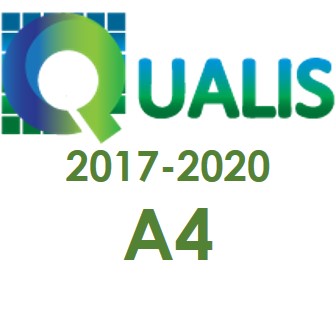Duration patterns of six english vowels produced by brazilian learners
DOI:
https://doi.org/10.22481/el.v12i2.1251Keywords:
Second Language Acquisition, Acoustic Phonetics, Phonology, English as a Foreign Language, VowelsAbstract
This paper presents the main characteristics in durational patterns of the pairs of vowels [i: I] [E æ] [u: U] as produced by Brazilian learners who started learning English as a Foreign Language at different ages. The students were in the last semester of their EFL courses and have acquired English exclusively in Brazilian classrooms.
KEYWORDS: Second Language Acquisition. Acoustic Phonetics. Phonology. English as a Foreign Language. Vowels.
Downloads
References
BIALYSTOK, E.; HAKUTA, K. Confounded age: Linguistic and cognitive factors in age differences for second language acquisition.
Second language acquisition and the critical period hypothesis, p. 161-181, 1999.
BOERSMA, P.; WEENINK, D. PRAAT, 2011.
BONGAERTS, T. Introduction: Ultimate attainment and the critical period hypothesis for second language acquisition. International Review of Applied Linguistics in Language Teaching, v. 43, n. 4, p. 259-267, 2005.
BYBEE, J. Phonology and language use. Cambridge: Cambridge University Press, 2003.
CELCE-MURCIA, M.; BRINTON, D. M.; GOODWIN, J. M. Teaching pronunciation: a reference for teachers of English to speakers of other languages. Cambridge: Cambridge University Press, 1996.
CRISTÓFARO-SILVA, T. Descartando fonemas: a representação mental da fonologia de uso. In: HORA, D. e COLLISCHONN, G. (Ed.). Teoria linguística: fonologia e outros temas. João Pessoa: Editora Universitária, 2003.
ELLIS, R. The study of second language acquisition. Oxford: Oxford University, 2008.
FLEGE, J. E. Second language speech learning: Theory, findings, and problems. In: STRANGE, W. (Ed.). Speech perception and linguistic experience: Issues in cross-language research. Baltimore: York Press, 1995. p. 233-277.
FLEGE, J. E. Age of learning and second language speech. In: BIRDSONG, D. (Ed.). Second language acquisition and the critical period hypothesis. Mahwah: Lawrence Erlbaum Associates, 1999. p. 101-131.
FLEGE, J. E. Language contact in bilingualism: Phonetic system interactions. Laboratory phonology, v. 9, p. 353-382, 2007.
HAKUTA, K. A critical period for second language acquisition? In: BAILEY JR, D. B.;BRUER, J. T., et al (Ed.). Critical thinking about critical periods. Baltimore, Maryland: Paul H. Brookes Publishing Co., 2001. p. 193-205.
KELLY, G. How to teach pronunciation. Harlow: Pearson Education India, 2006.
KUHL, P. K. Human adults and human infants show a “perceptual magnet effect” for the prototypes of speech categories, monkeys do not. Perception & psychophysics, v. 50, n. 2, p. 93-107, 1991.
KUHL, P. K. Innate predispositions and the effects of experience in speech perception: The native language magnet theory. In: BOYSSIB-BARDIES, B. (Ed.). Developmental neurocognition: Speech and face processing in the first year of life. The Hague: Kluwer Academic Publishers, 1993. p. 259-274.
KUHL, P. K. et al. Phonetic learning as a pathway to language: new data and native language magnet theory expanded (NLM-e). Philosophical Transactions of the Royal Society B: Biological Sciences, v. 363, n. 1493, p. 979-1000, 2008.
LADEFOGED, P. Vowels and consonants: an introduction to the sounds of languages. Massachusetts: Blackwell, 2001.
LEATHER, J. Phonological acquisition in multilingualism. In: MAYO, M. D. P. G. e LECUMBERRI, M. L. G. (Ed.). Age and the Acquisition of English as a Foreign Language. Clevedon: Multilingual Matters, 2003. p. 23-58.
LIMA JR, R. M. A influência da idade na aquisição da fonologia do inglês como língua estrangeira por brasileiros. 2012. (Tese de Doutorado). Departamento de Linguística, Português e Línguas Clássicas, Universidade de Brasília, Brasília, 2012.
LIMA JR, R. M. A influência da idade na aquisição de seis vogais do inglês por alunos brasileiros. (2014 no prelo).
MOYER, A. Age, accent, and experience in second language acquisition: an integrated approach to critical period inquiry. Clevedon: Multilingual Matters, 2004.
PARRINO, A. The politics of pronunciation and the adult learner. Adult ESL: Politics, Pedagogy and Participation in Classroom and Community Programs. Mahwah, N.J. : Lawrence Erlbaum Associates, 1998. p. 171-184.
RAUBER, A. S. Perception and production of English vowels by Brazilian EFL speakers. 2006. Tese (Doutorado em Letras) – Universidade Federal de Santa Catarina, Florianópolis, 2006.
SINGLETON, D. M.; RYAN, L. Language acquisition: the age factor. Clevedon: Multilingual Matters, 2004. WATKINS, M. A.; RAUBER, A. S. Variability in pretonic vowel reduction by Brazilian speakers of English. In: RAUBER, A. S.;WATKINS, M. A., et al (Ed.). The acquisition of language speech: studies in honor of Professor Barbara O. Baptista. Florianópolis: Insular, 2010. p. 75-99.
Downloads
Published
How to Cite
Issue
Section
License

Estudos da Língua(gem) is licensed under a Creative Commons Attribution 4.0 International License.
Authors who publish in the journal Estudos da Língua (gem) agree with the following terms:
The journal Estudos de Língua(gem) maintains the copyrights of the contributions published. These rights include the publication of the contribution and make its content available for free through the portal.







